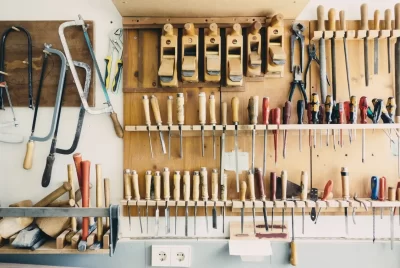Circular Saw: Tips and Techniques for Efficient Use
Hello folks, it’s time to dive into the world of circular saws. If you’re a novice or experienced, we’ve got a bunch of tips that’ll make your cutting more efficient. So, without further ado, let’s plunge into it!
Understanding the Fundamental Parts of a Circular Saw

Every device has an anatomy, and it’s essential to get up and close with it. In this case, understanding the fundamental parts of the circular saw will set the stage for better operation and safer usage. Here’s the vital vocabulary:
- Blade Guard: Keeps your hands and fingers safe from the blade while you’re working.
- Cut-line Notches: Guides your cutting line to maintain precision and uniformity.
- Base Plate: Balances your tool on the material you’re about to cut.
Safety Precautions for Operative Circular Saws

You don’t want to make a wrong move and turn your DIY project into a mishap, right? Most importantly, it’s all fun and efficient until safety principles are not undermined. So, here are quick safety steps:
- Equip yourself with safety gear such as goggles, dust mask and earmuffs.
- Avoid any hanging jewelry or loose-fitted clothes that might get entangled with the saw.
- Ensure your workspace has adequate lighting and is free from potentially hazardous debris.
While it’s tempting to rush through a project, 😊 remember that patience is always a virtue in carpentry. Take it slow and steady. Keep your work area tidy. Be safe!
The Proper Techniques for Straight Cutting

Straight cuts might seem a no biggie until you do it. Doesn’t get straight, does it? No worries. Let’s address this.
- Use a rafter square: It serves as a fence or straight edge guide, ultimately guiding the saw to a perfect straight cut.
- Choose an add-on track system: Improves the precision making it highly repeatable and smooth.
Using a Rafter Square for Straightedge Cutting
The use of a rafter square or speed square for straightedge cutting can save you a load of trouble trying to achieve the perfect straight line. This nifty tool serves two primary functions:
- Giving you an accurate 90-degree angle marking.
- Guiding your circular saw steadily along the cutting path.
Leveraging a Track System Add-on for Precision and Repeatability
While the circular saw shines in freehand operations, it sometimes can get a bit wobbly, wasn’t it? Well, that’s where a track system add-on can lend you a helping hand.
- A track system attaches to the circular saw, effectively stabilizing it.
- It provides a clean, straight path for your circular saw to traverse.
- Minimizes chances of a dangerous tool kickback.
The track system can be a game-changer in your sawing journey, offering a whole new level of safety, precision, and repeatability.
Efficient Cutting: Depth and Angle Adjustments
Controlling how deep or tilted your cut is a real gamechanger, and it can considerably impact the final result. Here’s how you can master this:
- Depth Adjustment: The blade of your circular saw should just clear the thickness of the material you are cutting. This reduces undue strain on the motor and decreases the risk of kickbacks.
- Angle Adjustment: Depending on the need for the cut, the blade can be tilted to provide an angle cut. This helps in making versatile cuts like bevel or miter cuts. Remember, more the tilt, more careful you need to be.
Strategies for Managing Blade Depth and Angle Adjustments
Getting the hang of blade adjustments can be a game-changer for your cutting experience. So, let’s have a quick look at this:
- For blade depth, ensure that the blade clears the thickness of your working material. Just an inch below the material would be an ideal setting.
- For bevel angles, note that a higher angle will result in a more pronounced bevel. You can adjust your saw to a full 45-degree angle for a strong bevel.
High Tooth Count Blades for Fine Cuts
Let’s talk about saw teeth! Now, you might wonder why it’s so important. Well, the number of teeth on a circular saw blade decides the finish of your cut.
- Higher tooth count results in fine, smooth cuts. Ideal for precise works.
- Lower tooth count would give you rough, fast cuts. Suitable for chopping off excess.
Dealing with Rough Cuts: The Lower Tooth Count Strategy
When you’re dealing with rough cuts, a blade with lower tooth count is what you need. Why, you ask?
- Such blades remove more material per cut which makes the cutting process quick.
- Less number of teeth means larger gullets, which help in better chip removal.
- The low tooth count can help keep the blade cool, enhancing the saw’s lifespan.
How to Reduce Tear-out and Ensure a Clean Finish
Admit it, tear-outs are frustrating. Luckily, there are ways you can minimize these annoying tear-outs and achieve neat, clean cuts:
- Use painter’s tape along the cutting line: It stabilizes the wood fibers and significantly reduces tear-out. Plus, you can easily see and follow your marking.
- Flip your material: Sometimes, having your material facedown can reduce tear-outs. Just make sure to re-mark your measurements correctly.
Tape Covering for Preventing Surface Marring
We all want to keep our materials in the best condition possible, right? And nobody likes unwelcome scratches or marrs on their work materials. Here’s your solution:
- Cover the shoe of the circular saw with tape. It provides a buffer between the saw and your material.
- Opt for a low-tack tape to prevent any adhesive residue on the shoe.
Mastering the Cutting Speed
The secret to efficient cutting? Well, it’s going slow and steady. You might think that speeding up the process will get the job done faster, but here’s the catch:
- Running the saw blade too fast can produce excessive heat resulting in dulling the blade.
- Contrarily, dragging the blade too slow might result in a rugged cut.
Maintaining a balanced speed is, therefore, essential for the longevity of your circular saw. So, remember – patience is the key.
Key Takeaways: Strategies and Techniques for Efficient Saw Usage
Hopping onto the circular saw train? Just remember these tips:
- Get familiar with all the parts of your saw, and don’t overlook the user manual.
- Be a safety geek! Gear up and keep your workspace tidy.
- Master your straight cuts using a rafter square and track system.
- Play with blade adjustments for various cuts.
- Pick the right blade as per your needs.
- Minimize tear-outs and surface marring using tapes.
- Most importantly, control your speed for optimal cutting.
With just a bit of practice, you’re all set to make cutting with a circular saw as easy as pie!
Frequently Asked Questions
Can a circular saw cut through all types of woods?
Absolutely! Whether it’s hardwood, softwood, thin, or thick, a circular saw can handle it all. Just make sure to adjust blade depth accordingly and choose the right blade.
How to select the proper tooth count blade for a circular saw?
It depends on your needs. For fine, smooth cuts, opt for a high tooth count blade. For rough, quick cuts, a lower tooth count blade will do the job.
Is there any risk associated with adjusting the blade depth during operation?
Yes, adjusting the blade depth while the saw is operating could lead to accidents and damage your material. Always ensure the saw is turned off while making adjustments.
Awesome folks! That wraps up our titbits on efficiently using a circular saw. Now, it’s your turn to put these tips into play. Live, love, cut.




